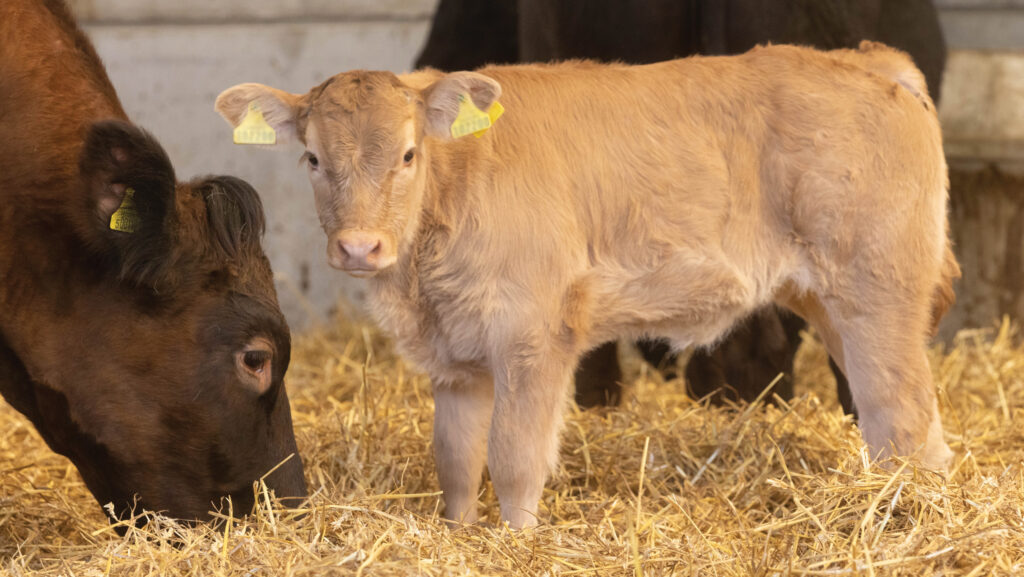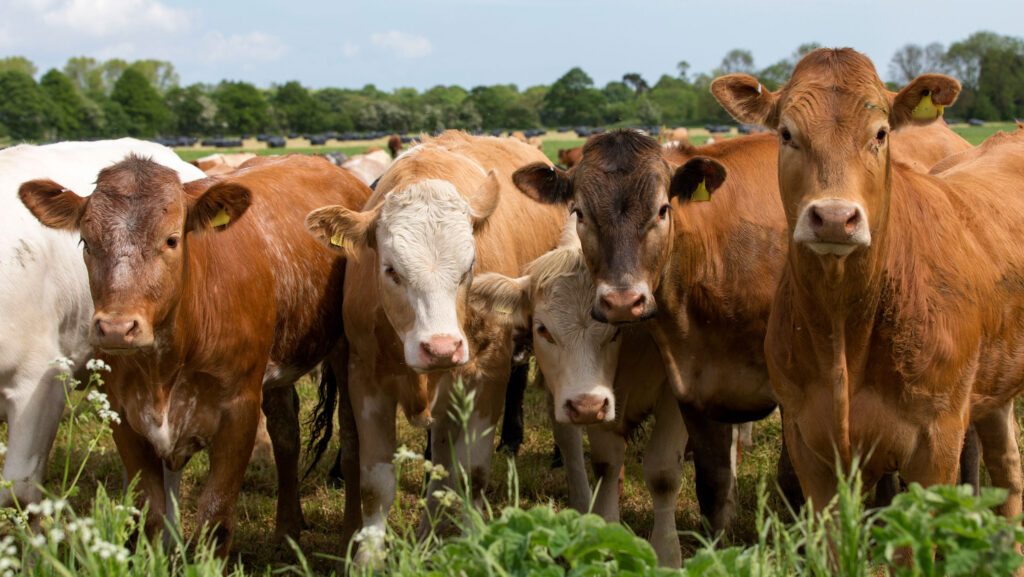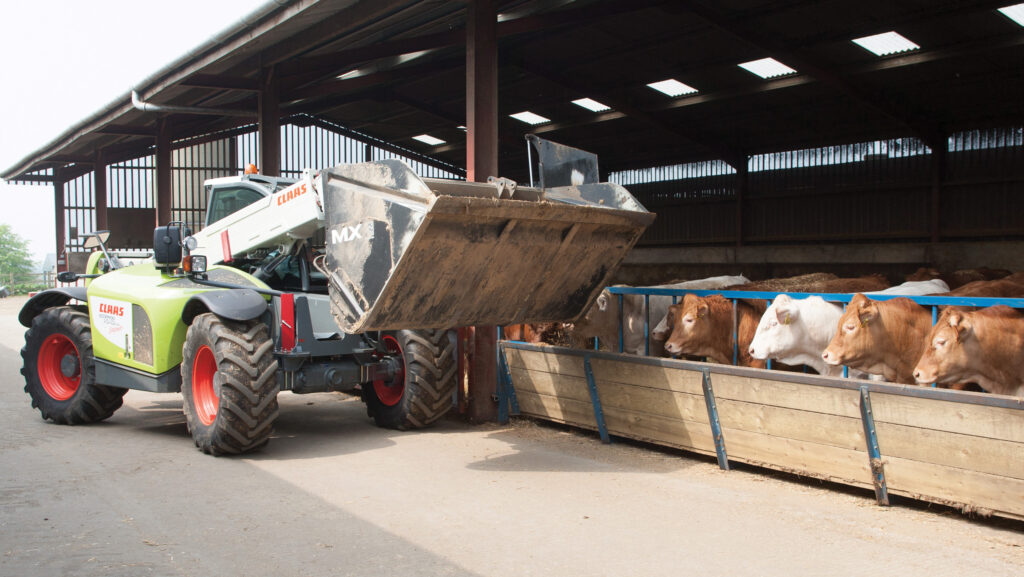Why radical change is needed for sustainable beef industry
 © Tim Scrivener
© Tim Scrivener Planning ahead to face upcoming issues and working to improve efficiency and build beef businesses with resilience were among the key conclusions from a round table discussion held at Rothamsted Research, North Wyke, Devon.
The group of farmers and industry experts invited to examine the findings of Farmers Weekly’s beef survey also called for the dairy and beef industries to work more closely together, given that 62% of UK beef comes from dairy farms.
See more: Struggle for survival revealed in wide-ranging beef survey
With some 64% of beef farmers surveyed believing their business will survive “with difficulty” in the absence of farm subsidies, radical change is needed on some farms for a sustainable industry, they concluded.
Beef prices and input costs are seen as the greatest challenge to beef enterprises over the next two years, according to the survey’s findings.
Reducing calving interval, making more efficient use of grassland and starting to measure and monitor performance are ways beef businesses can begin to make changes.
Efficiency and KPIs
With 46% of beef farmers recording calving ease, vet Navaratnam Partheeban (Theeb) said this KPI has now become important in the UK, having been a long-term driver of the US beef industry.
“They [US farmers] have reduced the number of beef breeds and their biggest KPI is selecting for calving ease.
Things are changing [here], but there is still a lot to do. What does calving ease actually mean to a farmer? We need better understanding,” he said, pointing out that some farmers might interpret this as just pulling on a calf, rather than having to use a calving jack.
Charolais breeder Ben Harman said calving ease has been an important KPI for pedigree breeders for years, but pointed out that the UK “really needs independent calving data”.
Cornish beef producer Mike Roberts said longevity and a cow that breeds a calf every year are key for the suckler industry.
However, data from National Beef Association (NBA) chief executive Neil Shand revealed only 82% of UK suckler cows take a calf to weaning each year.
“In the top herds, the percentages are in the 90s and in the bottom herds, in the 70s. The [average] national calving interval is 410 days; in Scotland it is 390 days,” he said.

© GNP
Beef income
“People need to take control of things they can control,” said Neil, commenting on survey results that showed 90% of respondents say they are managing price and cost volatility.
But he pointed out that there is no correlation between the retail price and that received at the farm gate.
“This is why the beef industry needs to build stronger relationships with retailers, because they are closer to the consumer. We don’t need processors to go out of business,” he said.
This is particularly important given that 65% of survey respondents said they were unlikely to join a marketing co-op for their enterprise, and 61% do not think an integrated beef scheme is an opportunity for their business.
Neil said in the US some 33 million cattle are handled by just three processors. In the UK, the “big four” cover 280 abattoirs and slaughter 2 million animals a year.
“There is a perception that the industry is manipulated by the big four, but prices follow global trade [like dairy].”
The NBA has “challenged” Defra to change the Europ payment scheme, which has been around since the 1960s and rewards breeding for cattle with “big backsides”. (By contrast, in the US, cattle are bred for long backs that produce a lot of steaks.)
But Neil reported that Defra wants processors to revise the scheme. Some have now redone the carcass grid for dairy-bred cattle so they are not penalised as much, he added.
With significant supply of beef coming from the UK dairy herd, suckler producers are going to have to find their unique selling point (USP), said Ben.
Dunbia’s beef agriculture manager, Eleanor Foster, agreed, saying regardless of breed, age or rearing system, all beef ends up in the same products unless there is a USP.
She said eating quality needs to be rewarded and pointed to research in Australia and New Zealand.
“There are visual marbling scores, or laboratory analysis, but no current, quick method and nothing that cattle farmers will trust.”
She hoped Dunbia’s project, which has been following 12,000 cattle from farm to fork and reviewed at agricultural shows, would provide some answers soon.
Top tips for farmers from the beef round table
- Improve efficiency and you can make money
- Have a plan and work to it
- The cattle of the future may not look like the cattle you had in the past
- You can’t argue about losing subsidies if you don’t know your own business and understand it – record data and improve it
- Benchmark against similar farm types, your neighbours and yourself
- Know how much things cost
- Look at data and reflect on what you can do in your business
- Look ahead at the farming issues coming up, such as water security
- Build resilience in your fields, crops and soils
Cost control
Cutting bought-in fertiliser and feed are the two key ways to reduce inputs, but the beef production systems that are being hardest hit, according to Neil, are short-keep finishers.
Those who buy stores are struggling because of fluctuating input and sale prices when they deal in cattle.
While only 39% of beef producers were making a profit every year, according to the survey, the table agreed it was debatable what “profit” means and whether farmers had included subsidy payments in this figure.
Eleanor said more information was needed on the correlation between those people who do record data and their profit levels.
Ben said farmers need to record costs more accurately and be more realistic on the time spent managing beef farming.
KW Feeds nutritionist Tom Spears said: “My generation wants to work on the business, not always within it.”
Mike agreed it was generational and said younger farmers no longer mix in farming-only social groups, but are aware of work/life balance outside farming and compared their lifestyle to their peers.
Both Ben and Theeb agreed that it should not be a “negative” to want to work fewer hours.
However, the lack of data recording was a concern – without accurate figures, it is hard to chart progress and make informed decisions, they pointed out.
Mel Griffith, Herdwatch’s Ireland and UK manager, was struck by how few farmers used software and data capture tools.
“Farmers are going to need to be more efficient, yet 38% are not interested in using data capture tools; it really scares me,” she said, adding that while the lack of a good internet connection does affect technology use, there are offline apps available.
KW Feeds nutritionist – and beef new entrant – George Sturla queried how many of the 20% using data tools were on a dairy beef scheme and were given it for free.

© Tim Scrivener
Future and sustainability
Although George voiced the opinion that “a family farm is a way of life”, not all respondents had discussed succession with the next generation and 31% admitted they had no plans in place.
However, Ben was impressed by how many (63%) were having conversations about succession. He said he knows farmers who would “bury their head in the sand” rather than discuss how the farm would pass to the next generation.
To make beef farming appeal to the younger generation, there needs to be a change in focus towards a better work/life balance. Tom summed it up as “a farm needs to be a sustainable business”.
“Farmers need to ask themselves, ‘What do you want from your farm and your business?’. I’ve made changes to my farm and I’m not a slave to it: I have set it up so I can spend time away from it now,” said Ben.
Being able to have time off and take holidays is essential for the next generation, said Mike, who changed to a rotational grazing system in 2019.
“Change what you are doing, and your son will come home. I was pleased to change and wished I had done it years ago.”
Survey respondents, however, were only able to take 10.7 days of holiday last year, compared with their target 18.6 days.
Only 40% said holidays were important, but 20% admitted they were not currently an option.
Making more use of grass
Rothamsted researcher Dr Jordana Rivero said North Wyke is now in its seventh year comparing cell-grazing with set-stocking.
In the first four years, productivity a hectare had more than doubled in cell-grazing, the botanical composition of the sward had improved and the carbon stock had increased 1.24t/ha a year, she added.
Tom questioned whether the focus on grass-fed beef was a result of the potential for cost reduction or chasing marketing hype.
Either way, he said, farmers can look at what feedstuffs they can improve at home: silage quality or making more from grazed grass.
He was clear that he wanted profitable and sustainable clients, yet finds too many farmers still making “two big cuts of rubbish silage” instead of top-quality forage.
“They could do without our feed if they made four good cuts. I want people to have fantastic forage so I can [ration cattle to] improve dry matter intakes,” he said, adding that improving cattle feed efficiency was also important.
Mike said the industry had seen an increase in paddock grazing over the past five years and agreed with dairy farmer Lucy Noad from Wiltshire, who rears all her dairy-beef calves to finishing, that farmers could start with small steps at improving grazing efficiency.
“Have a go,” said Lucy. “You don’t need to go from set-stocking to full paddock grazing all at once. Look at the animal health and productivity grants for water troughs and fencing.”
George added: “Learn to shut the gate and learn steadily bit by bit. It’s simple.”
Integrated beef schemes
Although only 40% of farmers surveyed agreed that integrated beef schemes represent an opportunity, Theeb pointed out that they help new entrants.
George, who is running Longhorns and selling the meat through box schemes, agreed.
Ben reflected on pig and poultry sectors where integration is the norm, and said he had been told by other beef producers that “it’s not farming, as I’m not making the decisions”.
Dunbia runs an integrated scheme, although Eleanor admitted the opinion is that it favours the processor/retailer, and not everyone likes being told what to feed or vaccinate for.
“But some people have very good experiences,” she added.
